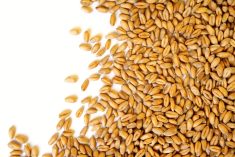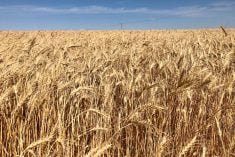MarketsFarm — Stocks of Canadian grains at year-end appear to be pretty much in line with market expectations.
Statistics Canada on Tuesday issued its report on stocks as of Dec. 31, 2022, which highlighted notable increases in most grains, further signaling a recovery from the 2021 drought.
“Stocks reports are important because they confirm the production numbers for crops like canola. For wheat and barley, it confirms production, but it also gives us an idea of domestic feed usage for the first five months of the crop year,” Winnipeg-based independent trader Jerry Klassen said.
Read Also

China rapeseed meal futures see largest one-day gain in almost three months after Xi–Carney talks
China’s most active Zhengzhou rapeseed (canola) meal futures posted their largest daily gain in nearly three months on Monday, after Canadian Prime Minister Mark Carney and Chinese President Xi Jinping met in South Korea last week without securing a breakthrough on tariffs.
There were no big surprises in the stocks report and, as expected, it wasn’t a big market mover, he said, deeming the report to be neutral for canola and spring wheat, while somewhat supportive of durum.
Klassen said trade predictions on canola were 10.7 million to 12.6 million tonnes, with an average of 11.7 million. The report pegged total canola stocks at a little under 11.36 million. A year ago, StatCan reported December stocks at 8.79 million tonnes and the five-year average is at 13.5 million.
The trader noted the average call on oats was “on the money” at 3.6 million tonnes, with StatCan estimating a shade less. The federal agency’s number is also significantly higher than stocks from December 2021, which were 1.88 million tonnes. Oats also exceeded the five-year average of 2.51 million tonnes.
Klassen said trade expectations for wheat and durum were also close to the StatCan numbers. The agency placed all wheat stocks at 22.29 million tonnes, surpassing the 16.82 million from the previous December but a little below the five-year average of 23.52 million.
Durum was estimated to be just short of 3.6 million tonnes, better than last year’s 2.53 million. However, current stocks were well short of the five-year average of 4.47 million tonnes.
— Glen Hallick reports for MarketsFarm from Winnipeg.













